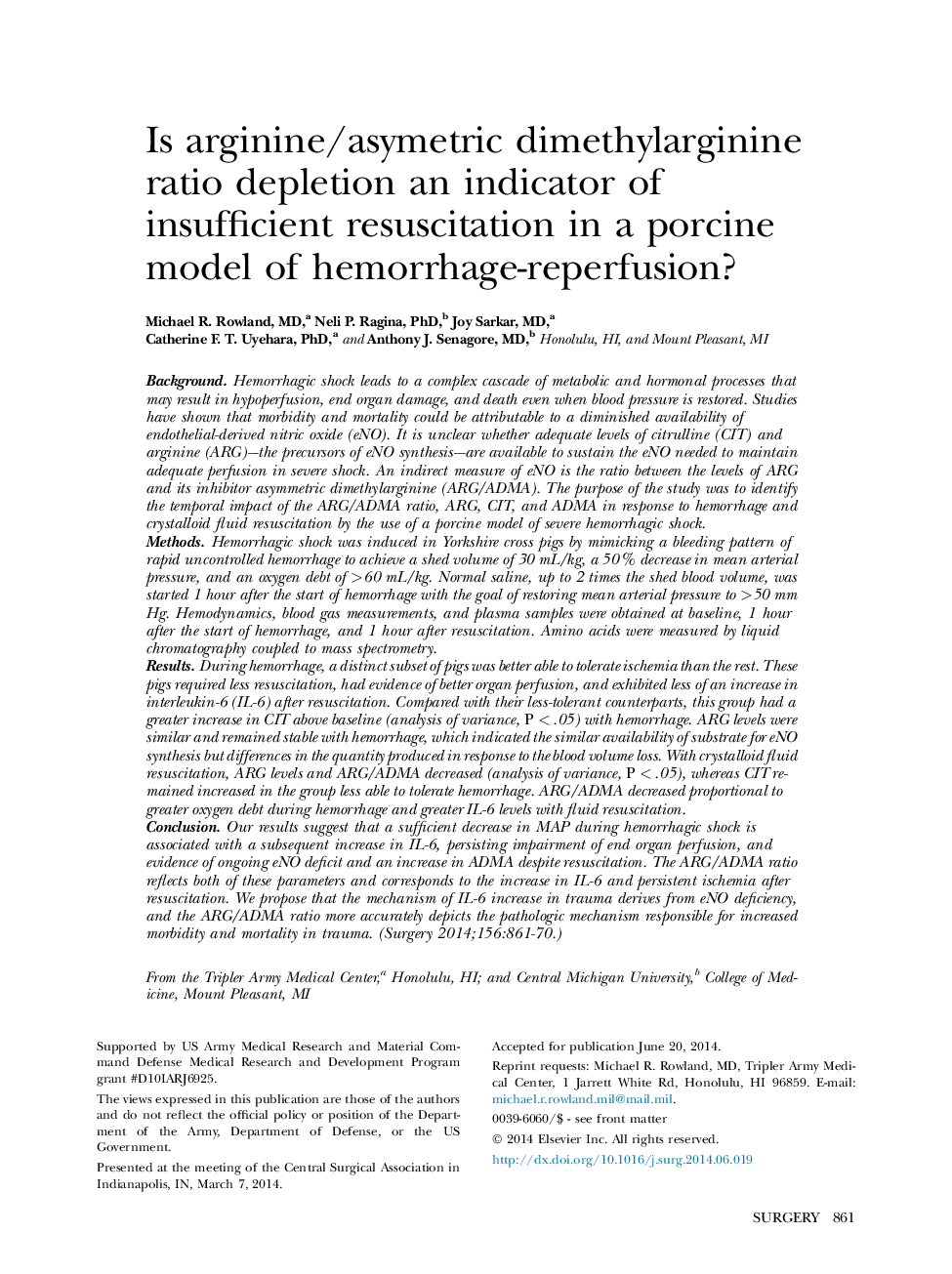| Article ID | Journal | Published Year | Pages | File Type |
|---|---|---|---|---|
| 4307631 | Surgery | 2014 | 10 Pages |
BackgroundHemorrhagic shock leads to a complex cascade of metabolic and hormonal processes that may result in hypoperfusion, end organ damage, and death even when blood pressure is restored. Studies have shown that morbidity and mortality could be attributable to a diminished availability of endothelial-derived nitric oxide (eNO). It is unclear whether adequate levels of citrulline (CIT) and arginine (ARG)—the precursors of eNO synthesis—are available to sustain the eNO needed to maintain adequate perfusion in severe shock. An indirect measure of eNO is the ratio between the levels of ARG and its inhibitor asymmetric dimethylarginine (ARG/ADMA). The purpose of the study was to identify the temporal impact of the ARG/ADMA ratio, ARG, CIT, and ADMA in response to hemorrhage and crystalloid fluid resuscitation by the use of a porcine model of severe hemorrhagic shock.MethodsHemorrhagic shock was induced in Yorkshire cross pigs by mimicking a bleeding pattern of rapid uncontrolled hemorrhage to achieve a shed volume of 30 mL/kg, a 50% decrease in mean arterial pressure, and an oxygen debt of >60 mL/kg. Normal saline, up to 2 times the shed blood volume, was started 1 hour after the start of hemorrhage with the goal of restoring mean arterial pressure to >50 mm Hg. Hemodynamics, blood gas measurements, and plasma samples were obtained at baseline, 1 hour after the start of hemorrhage, and 1 hour after resuscitation. Amino acids were measured by liquid chromatography coupled to mass spectrometry.ResultsDuring hemorrhage, a distinct subset of pigs was better able to tolerate ischemia than the rest. These pigs required less resuscitation, had evidence of better organ perfusion, and exhibited less of an increase in interleukin-6 (IL-6) after resuscitation. Compared with their less-tolerant counterparts, this group had a greater increase in CIT above baseline (analysis of variance, P < .05) with hemorrhage. ARG levels were similar and remained stable with hemorrhage, which indicated the similar availability of substrate for eNO synthesis but differences in the quantity produced in response to the blood volume loss. With crystalloid fluid resuscitation, ARG levels and ARG/ADMA decreased (analysis of variance, P < .05), whereas CIT remained increased in the group less able to tolerate hemorrhage. ARG/ADMA decreased proportional to greater oxygen debt during hemorrhage and greater IL-6 levels with fluid resuscitation.ConclusionOur results suggest that a sufficient decrease in MAP during hemorrhagic shock is associated with a subsequent increase in IL-6, persisting impairment of end organ perfusion, and evidence of ongoing eNO deficit and an increase in ADMA despite resuscitation. The ARG/ADMA ratio reflects both of these parameters and corresponds to the increase in IL-6 and persistent ischemia after resuscitation. We propose that the mechanism of IL-6 increase in trauma derives from eNO deficiency, and the ARG/ADMA ratio more accurately depicts the pathologic mechanism responsible for increased morbidity and mortality in trauma.
